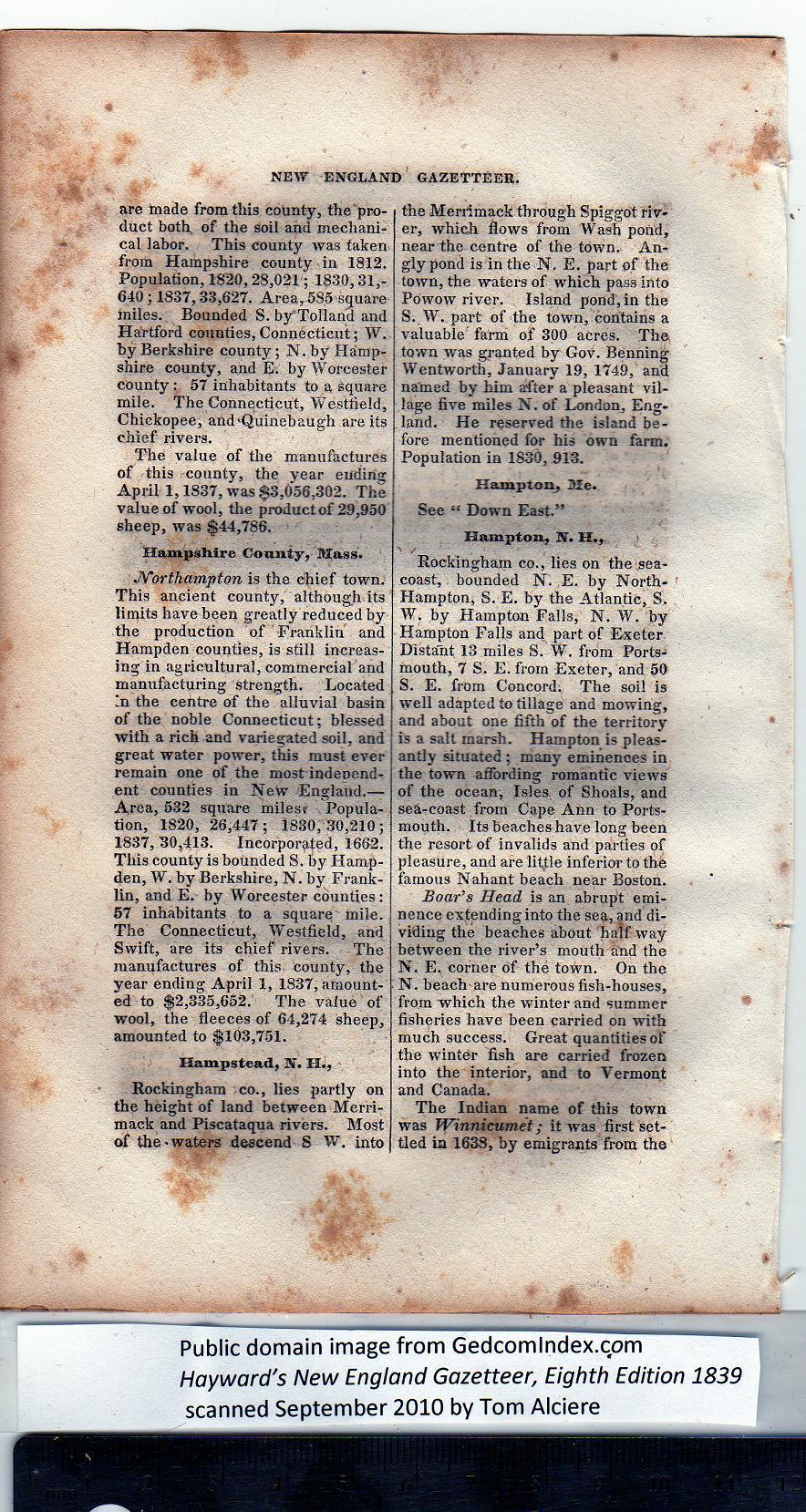|
are made from this county, the pro-
duct both of the soil and mechani-
cal labor. This county was taken
from Hampshire county in 1812.
Population, 1820,28,021; 1830,31,-
640; 1837,33,627. Area, 585 square
miles. Bounded S. by Tolland and
Hartford counties,Connecticut; W.
by Berkshire county; N. by Hamp-
shire county, and E. by Worcester
county : 57 inhabitants to a square
mile. The Connecticut, Westfield,
Chickopee, and*Quinebaug*h are its
chief rivers.
The value of the manufactures
of this county, the year ending
April 1,1837, was $3,056,302. The
value of wool, the productof 29,950
sheep, was $44,786.
Hampshire County, Mass.
Northampton is the chief town.
This ancient county, although its
limits have been greatly reduced by
the production of Franklin and
Hampden counties, is still increas-
ing in agricultural, commercial and
manufacturing strength. Located
In the centre of the alluvial basin
of the noble Connecticut; blessed
with a rich and variegated soil, and
great water power, this must ever
remain one of the most independ-
ent counties in New England.—
Area, 532 square milesr Popula-
tion, 1820, 26,447 ; 1830, 30,210 ;
1837, 30,413. Incorporated, 1662.
This county is bounded S. by Hamp-
den, W. by Berkshire, N. by Frank-
lin, and E. hy Worcester counties:
57 inhabitants to a square mile.
The Connecticut, Westfield, and
Swift, are its chief rivers. The
manufactures of this county, the
year ending April 1, 1837, amount-
ed to $2,335,652. The value of
wool, the fleeces of 64,274 sheep,
amounted to $103,751.
Hampstead, N. H., |
Rockingham co., lies partly on
the height of land between Merri-
mack and Piscataqua rivers. Most
of the*waters descend S W. into
the Merrimack through Spiggot riv-
er, which flows from Wash poud,
near the centre of the town. An-
gly pond is in the N. E. part of the
town, the waters of which pass into
Powow river. Island pond, in the
S. W. part of the town, contains a
valuable farm of 300 acres. The
town was granted by Gov. Benning
Wentworth, January 19, 1749, and
named by him after a pleasant vil-
lage five miles X. of London, Eng-
land. He reserved the island be-
fore mentioned for his own farm.
Population in 1830, 913.
Hampton, Me.
See “ Down East.”
Hampton, IV. H.,
Rockingham co., lies on the sea-
coast, bounded N. E. by North-
Hampton, S. E. by the Atlantic, S.
W. by Hampton Falls, N. W. by
Hampton Falls and part of Exeter
Distant 13 miles S. W. from Ports-
mouth, 7 S. E. from Exeter, and 50
S. E. from Concord. The soil is
well adapted to tillage and mowing,
and about one fifth of the territory
is a salt marsh. Hampton is pleas-
antly situated ; many eminences in
the town affording romantic views
of the ocean, Isles of Shoals, and
sea-coast from Cape Ann to Ports-
mouth. Its beaches have long been
the resort of invalids and parties of
pleasure, aud are little inferior to the
famous Nahant beach near Boston.
Boar’s Head is an abrupt emi-
nence extending into the sea, and di-
viding the beaches about halfway
between the river’s mouth and the
N. E. corner of the town. On the
N. beach are numerous fish-liouses,
from which the winter and summer
fisheries have been carried on with
much success. Great quantities of
the winter fish are carried frozen
into the interior, and to Vermont
and Canada.
The Indian name of this town
was TVinnicumet; it was first set-
tled in 1638, by emigrants from the |
